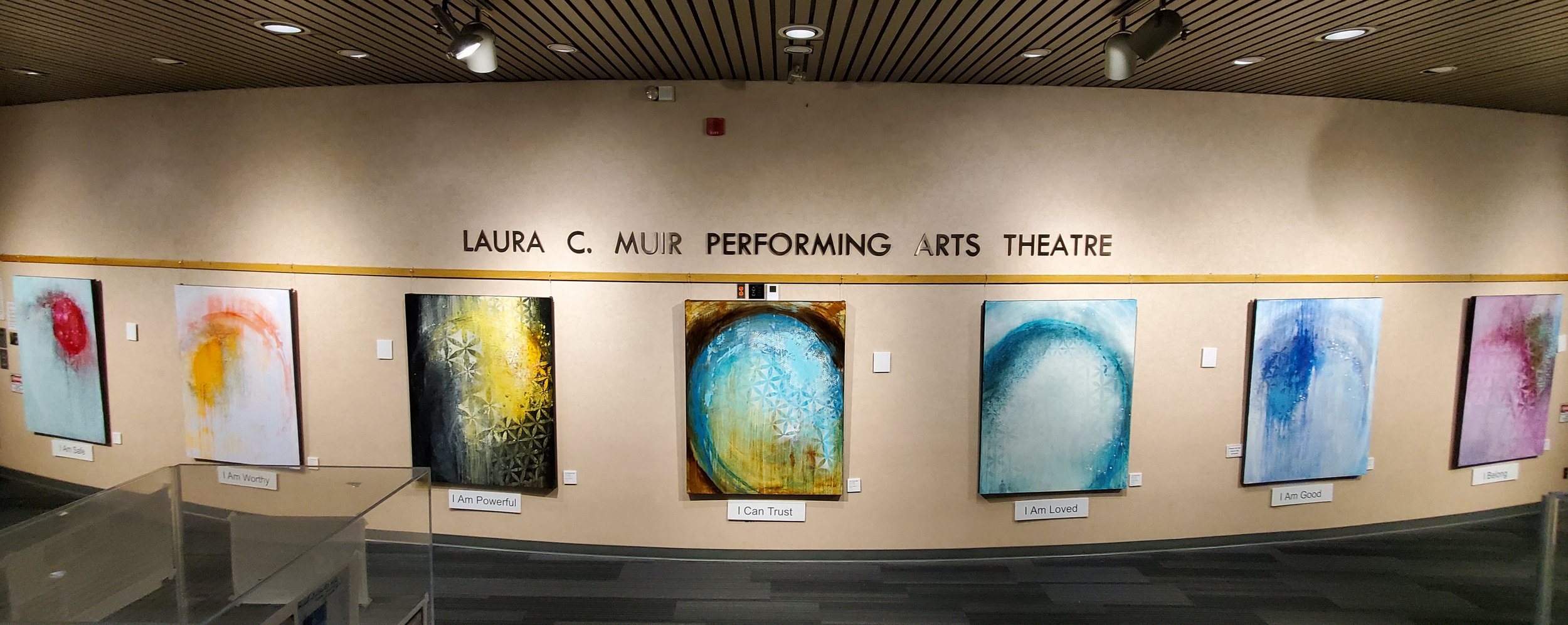The Art of Well-Being: How Visual Harmony Elevates Workspaces
/A casual office lobby environment is uplifted by Deb Chaney’s painting New Perspective, 11” x 15” x 0.1”. large scale prints available via SaatchI Online Gallery.
Transform your environment, transform your energy.
Imagine walking into a workspace that makes you feel calm, inspired, and focused. The right artwork has the power to shift energy, enhance well-being, and boost productivity. For forward-thinking companies, investing in meaningful art isn’t just about aesthetics—it’s about creating a workplace that nurtures mindfulness and creativity.
New Perspective, 11” x 15” x 0.1” mixed media on canvas, © Deb Chaney Prints available on Saatchi Gallery.
The Science of Art & Well-Being
Scientific research confirms what many intuitively know—our environments significantly impact our emotions and productivity. Studies from Gallup show that enriched environments, particularly those featuring artwork, can reduce stress levels and improve concentration in the workplace. A well-curated workspace doesn’t just look appealing; it fosters an atmosphere of creativity, efficiency, and well-being. (Source)
Beyond aesthetics, art has been linked to cognitive benefits such as improved problem-solving skills and increased emotional resilience. Organizations that prioritize workplace design and incorporate visual elements often see enhanced employee engagement and satisfaction. Simply put, art isn’t just decor—it’s a tool for transformation.
Jocelyn Dewar in her newly transformed Edward Jones Nanaimo office. Featured artwork: It Is Safe For Me To Play, 48” x 48” x 1.5” mixed media on canvas, Drishti Painting Series © Deb Chaney Prints available on Saatchi Gallery.
Real-World Impact: Transforming an Office with 'New Perspective'
Recently, I had the opportunity to collaborate with Jocelyn Dewar, an Edward Jones financial consultant, who wanted to revamp her office space. She envisioned a welcoming, calming environment where both she and her clients could feel at ease while engaging in important financial discussions.
After carefully considering her needs, we chose my painting, New Perspective. This piece features fluid, layered hues that balance strength and serenity, mirroring the kind of atmosphere she wanted to cultivate. Once installed, the change in her office was immediate. The previously stark, uninspiring space became a haven—clients expressed feeling more relaxed, and Jocelyn herself noticed an increase in her own focus and clarity.
This experience reinforced my belief in the power of art to shift energy in a space. When we surround ourselves with artwork that resonates, we invite creativity, balance, and transformation into our daily lives. (Read more)
Installation of six Strokes, 9” x 12” x 0.1” mixed media on Paper, © Deb Chaney Prints available on Saatchi Gallery.
Choosing the Right Art for Maximum Impact
Selecting the right artwork for a workspace isn’t just about personal taste; it’s about aligning the energy of the piece with the function and intention of the space. Here are three essential considerations when choosing art for an office environment:
Color Psychology: Different colors evoke different emotions. Soft blues and greens promote calm and clarity, while warmer tones like yellows and oranges can boost creativity and enthusiasm.
Scale and Placement: Artwork should complement the space without overwhelming it. A large-scale piece can serve as a statement, while smaller works can add subtle texture and depth.
Personal Connection: Choosing art that holds personal meaning or aligns with company values creates a more authentic and inviting atmosphere.
By thoughtfully selecting art that resonates with both the individual and the workspace, companies can craft an environment that supports focus, creativity, and overall well-being.
six Strokes, 9” x 12” x 0.1” mixed media on Paper, © Deb Chaney Prints available on Saatchi Gallery.
Final Thoughts
Art has the power to transform not just walls but the way we feel and function within a space. Whether you’re a business owner looking to elevate your office environment or a professional working from home, integrating meaningful art can significantly enhance your daily experience.
The right piece of art can do more than decorate—it can shift energy, elevate focus, and create a sanctuary of inspiration.
Interested in seeing how Deb Chaney’s Art for Well-Being can transform your space? Book your personal consultation for recommendations to transform and elevate your office space today. Email info [at] d e b c h a n e y [dot] com and mention this blog.
#ArtForWellBeing #MindfulSpaces #CreativeOffices #HealingArt #CorporateWellness































